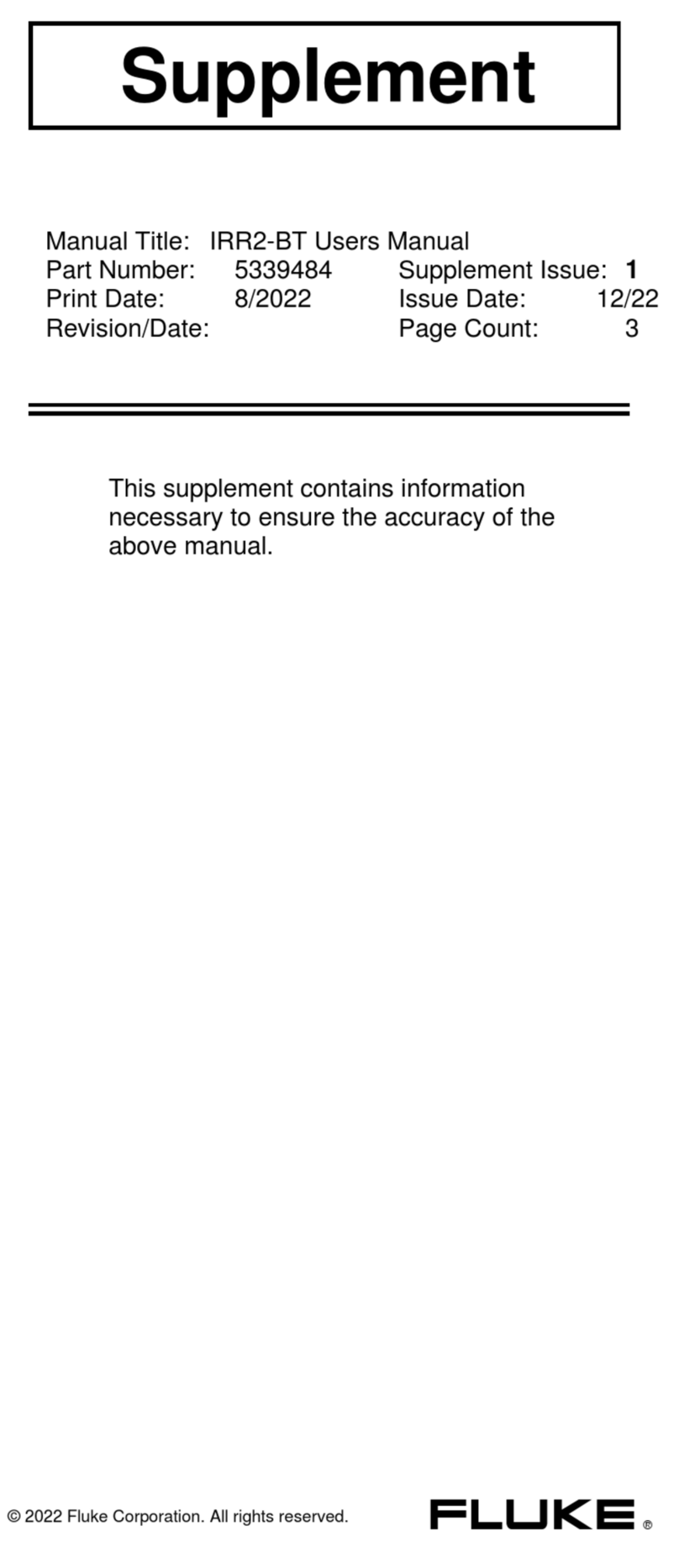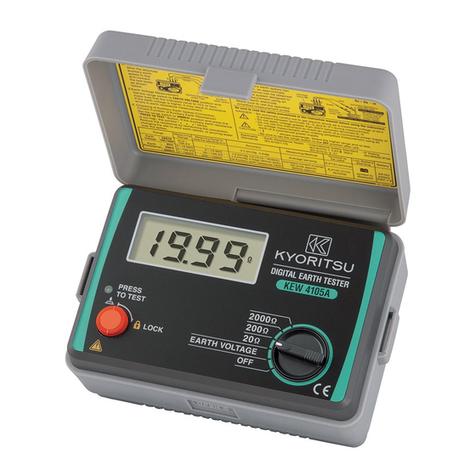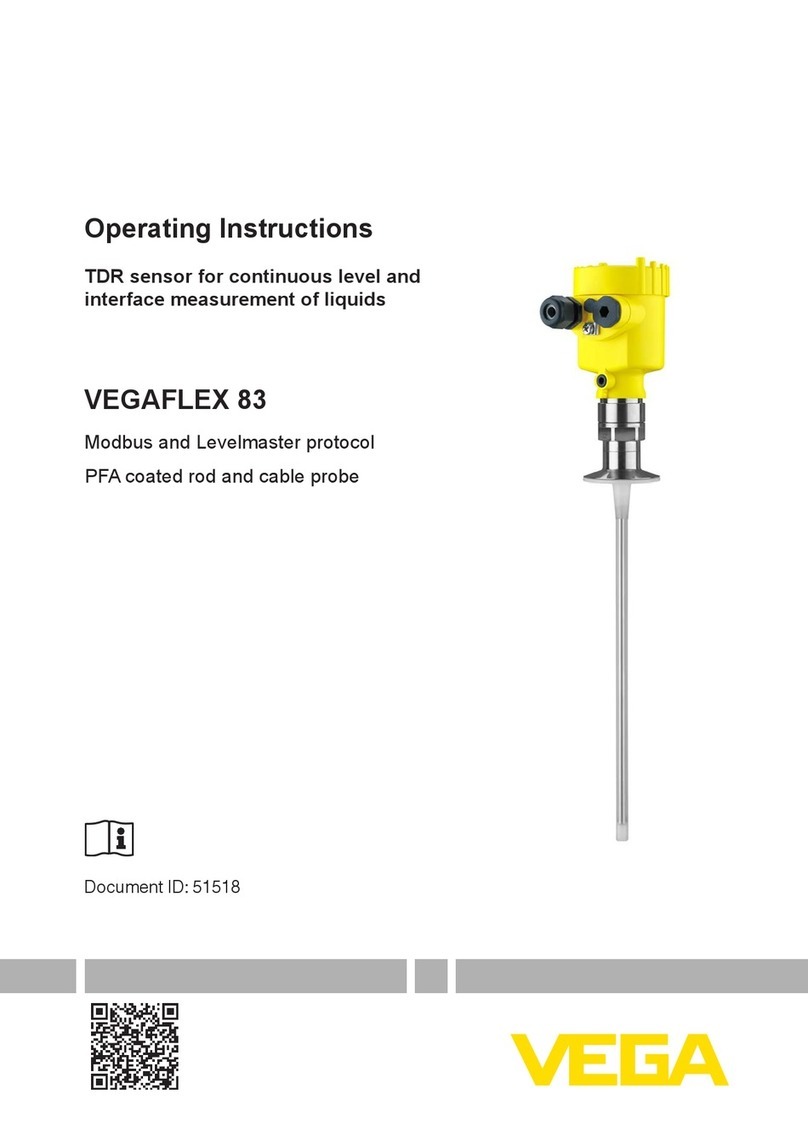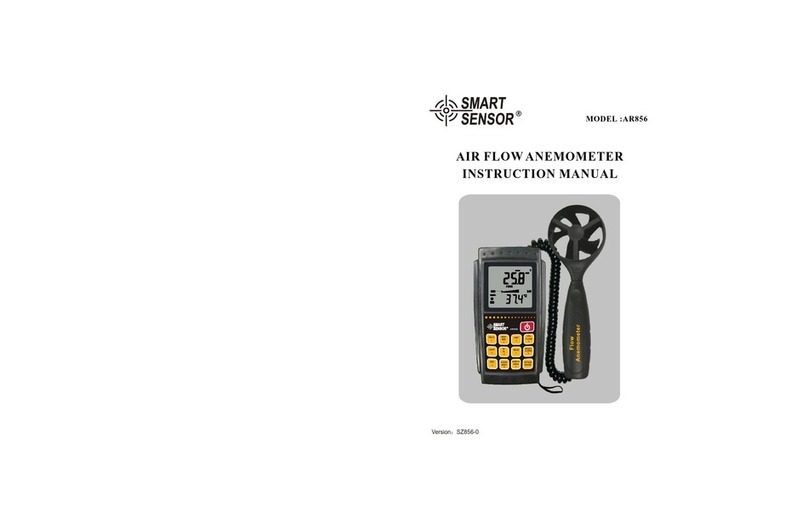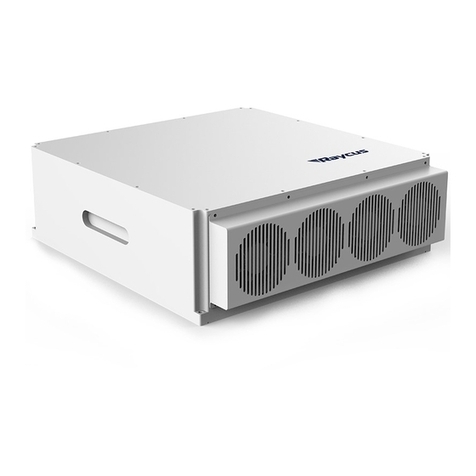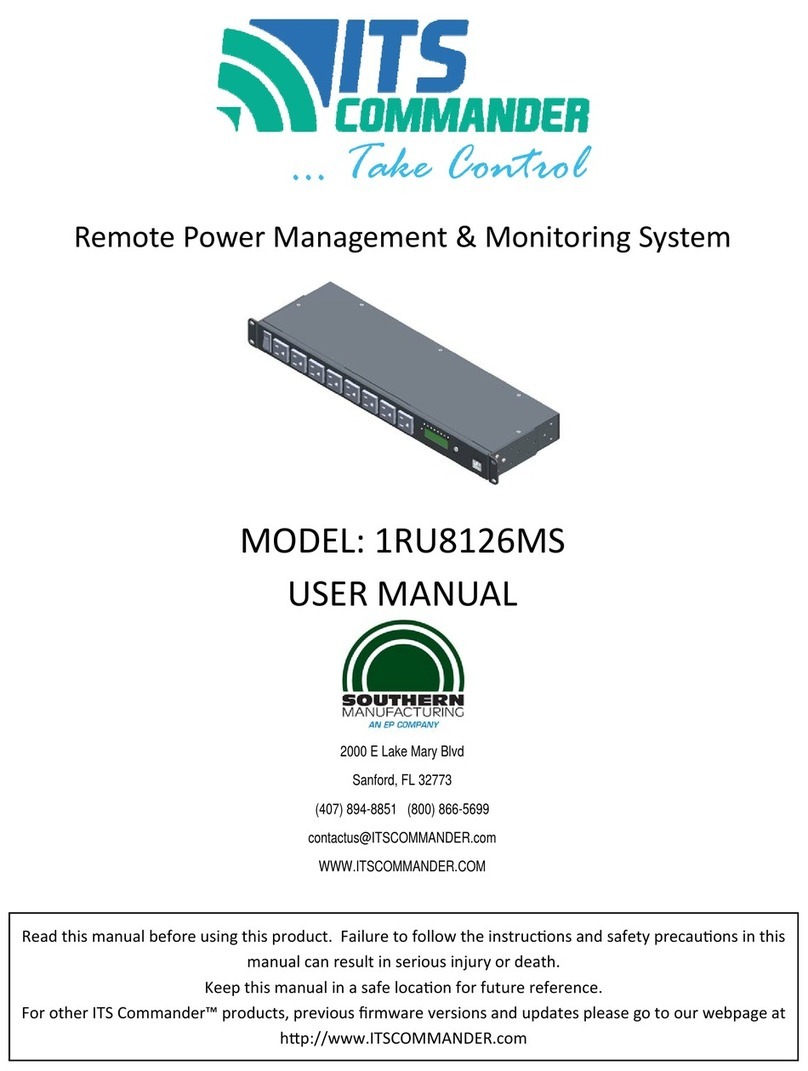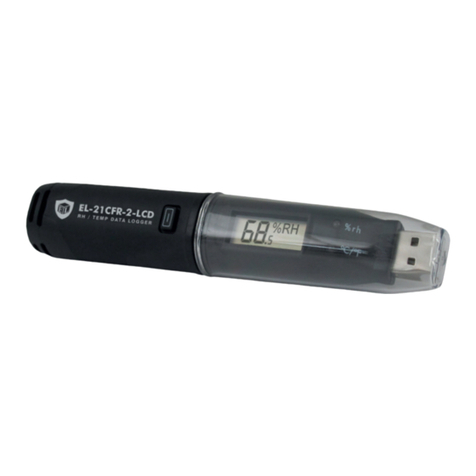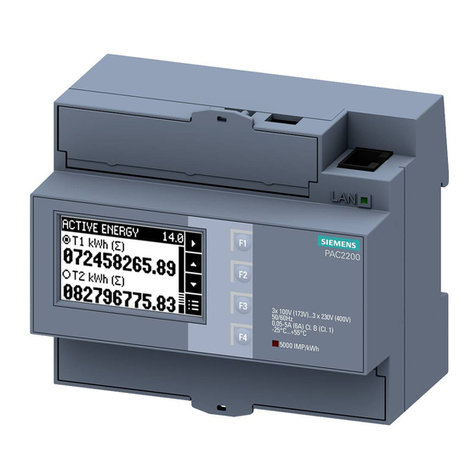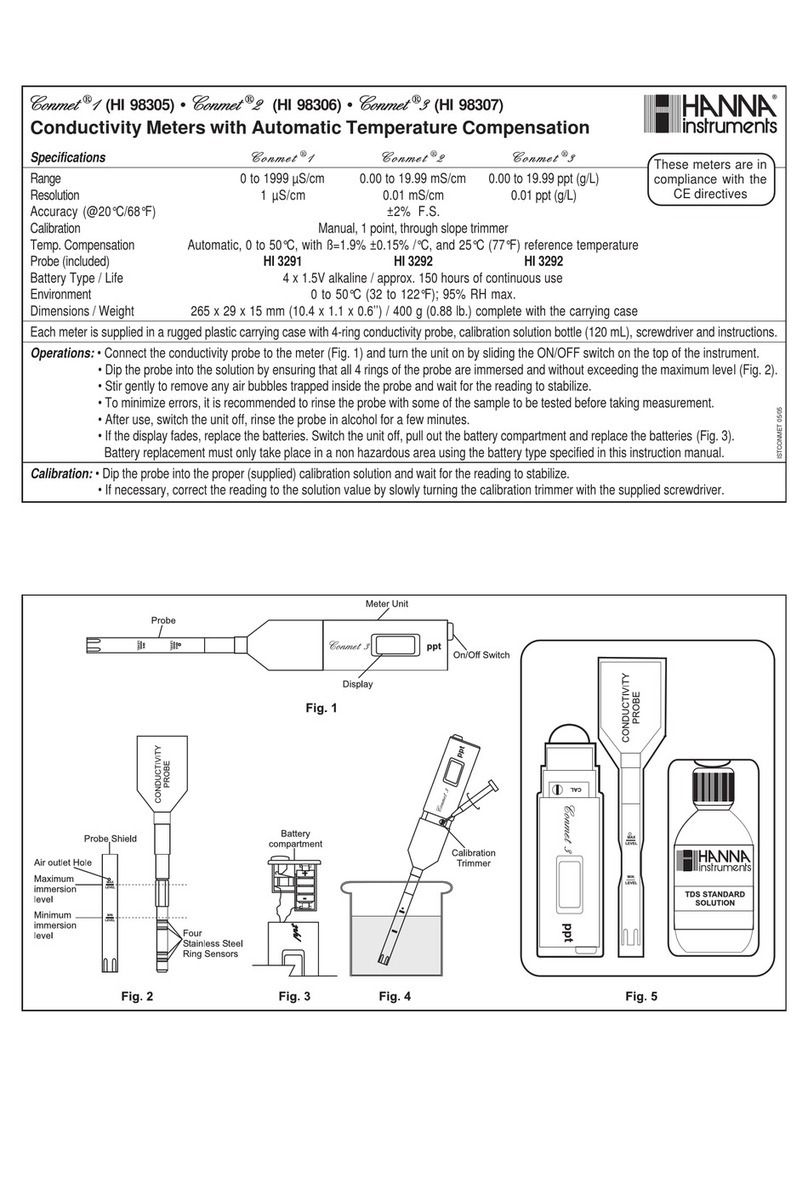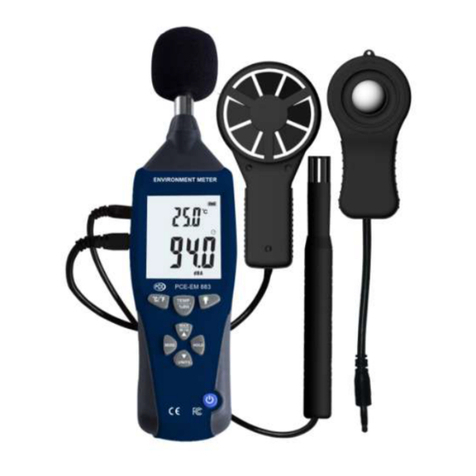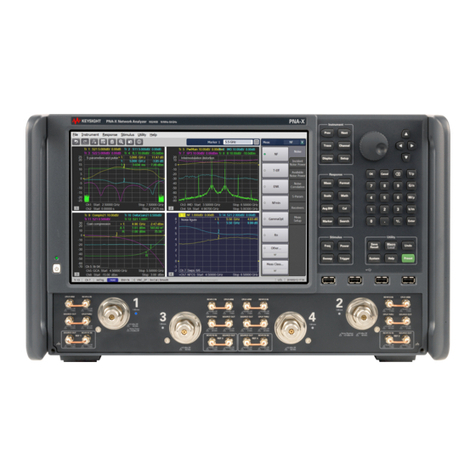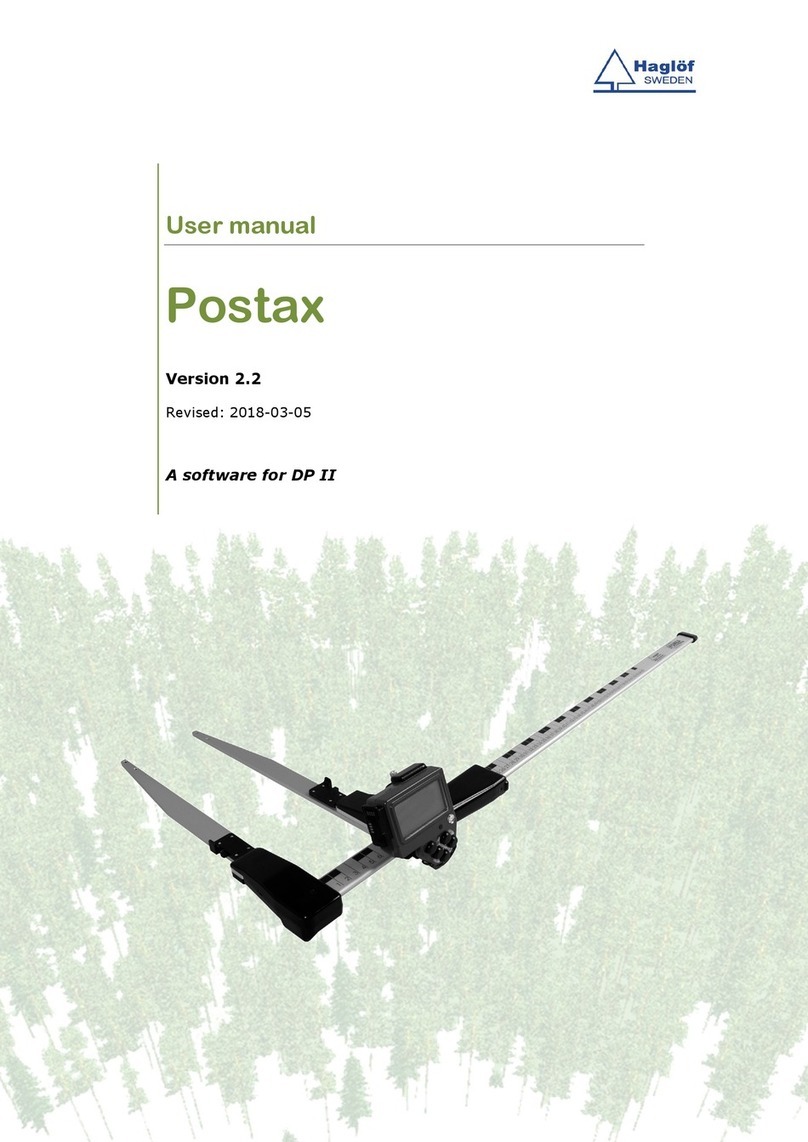Data Translation DT9871U User manual

User’s Manual
UM-23654-D
(TEMPpointTM, VOLTpointTM,
for USB Measurement
Instruments
and MEASURpointTM)
Title Page

Fourth Edition
May, 2010
Data Translation, Inc.
100 Locke Drive
Marlboro, MA 01752-1192
(508) 481-3700
www.datatranslation.com
Fax: (508) 481-8620
E-mail: [email protected]
Copyright © 2009 - 2010 by Data Translation, Inc.
All rights reserved.
Information furnished by Data Translation, Inc. is believed to be
accurate and reliable; however, no responsibility is assumed by
Data Translation, Inc. for its use; nor for any infringements of
patents or other rights of third parties which may result from its
use. No license is granted by implication or otherwise under any
patent rights of Data Translation, Inc.
Use, duplication, or disclosure by the United States Government
is subject to restrictions as set forth in subparagraph (c)(1)(ii) of
the Rights in Technical Data and Computer software clause at 48
C.F.R, 252.227-7013, or in subparagraph (c)(2) of the Commercial
Computer Software - Registered Rights clause at 48 C.F.R.,
52-227-19 as applicable. Data Translation, Inc., 100 Locke Drive,
Marlboro, MA 01752.
Data Translation® is a registered trademark of Data Translation,
Inc. MEASURpointTM, TEMPpointTM, VOLTpointTM,
ISO-ChannelTM, and Measure Foundry™ are trademarks of Data
Translation, Inc.
All other brand and product names are trademarks or registered
trademarks of their respective companies.
Copyright Page

Radio and Television Interference
This equipment has been tested and found to comply with CISPR EN55022 Class A and
EN61000-6-1 requirements and also with the limits for a Class A digital device, pursuant to
Part 15 of the FCC Rules. These limits are designed to provide reasonable protection against
harmful interference when the equipment is operated in a commercial environment. This
equipment generates, uses, and can radiate radio frequency energy and, if not installed and
used in accordance with the instruction manual, may cause harmful interference to radio
communications. Operation of this equipment in a residential area is likely to cause harmful
interference, in which case the user will be required to correct the interference at his own
expense.
Changes or modifications to this equipment not expressly approved by Data Translation could
void your authority to operate the equipment under Part 15 of the FCC Rules.
Note: This product was verified to meet FCC requirements under test conditions that
included use of shielded cables and connectors between system components. It is important
that you use shielded cables and connectors to reduce the possibility of causing interference
to radio, television, and other electronic devices.
Canadian Department of Communications Statement
This digital apparatus does not exceed the Class A limits for radio noise emissions from
digital apparatus set out in the Radio Interference Regulations of the Canadian Department of
Communications.
Le présent appareil numérique n’émet pas de bruits radioélectriques dépassant les limites
applicables aux appareils numériques de la class A prescrites dans le Règlement sur le
brouillage radioélectrique édicté par le Ministère des Communications du Canada.
FCC
Page


5
Table of Contents
About this Manual . . . . . . . . . . . . . . . . . . . . . . . . . . . . . . . . . . . . . . . . . . . . . . . . . . . . . . 9
Intended Audience. . . . . . . . . . . . . . . . . . . . . . . . . . . . . . . . . . . . . . . . . . . . . . . . . . . . . . . . . . . . . 9
How this Manual is Organized . . . . . . . . . . . . . . . . . . . . . . . . . . . . . . . . . . . . . . . . . . . . . . . . . . 9
Conventions Used in this Manual . . . . . . . . . . . . . . . . . . . . . . . . . . . . . . . . . . . . . . . . . . . . . . . 10
Related Information . . . . . . . . . . . . . . . . . . . . . . . . . . . . . . . . . . . . . . . . . . . . . . . . . . . . . . . . . . . 10
Where To Get Help. . . . . . . . . . . . . . . . . . . . . . . . . . . . . . . . . . . . . . . . . . . . . . . . . . . . . . . . . . . . 11
Chapter 1: Overview . . . . . . . . . . . . . . . . . . . . . . . . . . . . . . . . . . . . . . . . . . . . . . . . . . . 13
Hardware Features. . . . . . . . . . . . . . . . . . . . . . . . . . . . . . . . . . . . . . . . . . . . . . . . . . . . . . . . . . . . 14
TEMPpoint Features . . . . . . . . . . . . . . . . . . . . . . . . . . . . . . . . . . . . . . . . . . . . . . . . . . . . . . . 14
VOLTpoint Features . . . . . . . . . . . . . . . . . . . . . . . . . . . . . . . . . . . . . . . . . . . . . . . . . . . . . . . 15
MEASURpoint Features . . . . . . . . . . . . . . . . . . . . . . . . . . . . . . . . . . . . . . . . . . . . . . . . . . . . 16
Supported Software . . . . . . . . . . . . . . . . . . . . . . . . . . . . . . . . . . . . . . . . . . . . . . . . . . . . . . . . . . . 18
Accessories . . . . . . . . . . . . . . . . . . . . . . . . . . . . . . . . . . . . . . . . . . . . . . . . . . . . . . . . . . . . . . . . . . 19
Getting Started Procedure. . . . . . . . . . . . . . . . . . . . . . . . . . . . . . . . . . . . . . . . . . . . . . . . . . . . . . 20
Part 1: Getting Started . . . . . . . . . . . . . . . . . . . . . . . . . . . . . . . . . . . . . 21
Chapter 2: Preparing to Use the Instrument . . . . . . . . . . . . . . . . . . . . . . . . . . . . . . . . 23
Unpacking . . . . . . . . . . . . . . . . . . . . . . . . . . . . . . . . . . . . . . . . . . . . . . . . . . . . . . . . . . . . . . . . . . . 25
Checking the System Requirements . . . . . . . . . . . . . . . . . . . . . . . . . . . . . . . . . . . . . . . . . . . . . 26
Installing the Software. . . . . . . . . . . . . . . . . . . . . . . . . . . . . . . . . . . . . . . . . . . . . . . . . . . . . . . . . 27
Viewing the Documentation. . . . . . . . . . . . . . . . . . . . . . . . . . . . . . . . . . . . . . . . . . . . . . . . . . . . 28
Chapter 3: Setting Up and Installing the Instrument . . . . . . . . . . . . . . . . . . . . . . . . . 29
Applying Power . . . . . . . . . . . . . . . . . . . . . . . . . . . . . . . . . . . . . . . . . . . . . . . . . . . . . . . . . . . . . . 31
Attaching the Instrument to the Computer . . . . . . . . . . . . . . . . . . . . . . . . . . . . . . . . . . . . . . . 33
Connecting Directly to the USB Ports . . . . . . . . . . . . . . . . . . . . . . . . . . . . . . . . . . . . . . . . 33
Connecting to an Expansion Hub . . . . . . . . . . . . . . . . . . . . . . . . . . . . . . . . . . . . . . . . . . . 35
Configuring the Device Driver . . . . . . . . . . . . . . . . . . . . . . . . . . . . . . . . . . . . . . . . . . . . . . . . . 37
Chapter 4: Wiring Signals . . . . . . . . . . . . . . . . . . . . . . . . . . . . . . . . . . . . . . . . . . . . . . . 39
General Wiring Recommendations . . . . . . . . . . . . . . . . . . . . . . . . . . . . . . . . . . . . . . . . . . . . . . 41
Warm-Up Time . . . . . . . . . . . . . . . . . . . . . . . . . . . . . . . . . . . . . . . . . . . . . . . . . . . . . . . . . . . . . . . 42
Connecting Thermocouple Inputs . . . . . . . . . . . . . . . . . . . . . . . . . . . . . . . . . . . . . . . . . . . . . . . 43
Connecting RTD Inputs. . . . . . . . . . . . . . . . . . . . . . . . . . . . . . . . . . . . . . . . . . . . . . . . . . . . . . . . 45
4-Wire RTD Connections . . . . . . . . . . . . . . . . . . . . . . . . . . . . . . . . . . . . . . . . . . . . . . . . . . . 46
3-Wire RTD Connections . . . . . . . . . . . . . . . . . . . . . . . . . . . . . . . . . . . . . . . . . . . . . . . . . . . 46
2-Wire RTD Connections . . . . . . . . . . . . . . . . . . . . . . . . . . . . . . . . . . . . . . . . . . . . . . . . . . . 47
Connecting Voltage Inputs . . . . . . . . . . . . . . . . . . . . . . . . . . . . . . . . . . . . . . . . . . . . . . . . . . . . . 49
Table of Contents

Contents
6
Connecting Voltage Inputs to Thermocouple Channels . . . . . . . . . . . . . . . . . . . . . . . . . 49
Connecting Voltage Inputs to RTD Channels . . . . . . . . . . . . . . . . . . . . . . . . . . . . . . . . . . 50
Connecting Voltage Inputs to High Voltage Channels . . . . . . . . . . . . . . . . . . . . . . . . . . 50
Connecting Current Loop Inputs. . . . . . . . . . . . . . . . . . . . . . . . . . . . . . . . . . . . . . . . . . . . . . . . 53
Connecting Current Loop Inputs to Thermocouple Channels. . . . . . . . . . . . . . . . . . . . 53
Connecting Current Loop Inputs to RTD Channels. . . . . . . . . . . . . . . . . . . . . . . . . . . . . 54
Connecting Current Loop Inputs to High Voltage Channels . . . . . . . . . . . . . . . . . . . . . 56
Connecting Digital I/O Signals . . . . . . . . . . . . . . . . . . . . . . . . . . . . . . . . . . . . . . . . . . . . . . . . . 58
Connecting Digital Input Signals . . . . . . . . . . . . . . . . . . . . . . . . . . . . . . . . . . . . . . . . . . . . 59
Connecting Digital Output Signals. . . . . . . . . . . . . . . . . . . . . . . . . . . . . . . . . . . . . . . . . . . 60
Chapter 5: Verifying the Operation of Your Instrument . . . . . . . . . . . . . . . . . . . . . . . 61
Overview . . . . . . . . . . . . . . . . . . . . . . . . . . . . . . . . . . . . . . . . . . . . . . . . . . . . . . . . . . . . . . . . . . . . 63
Running the Measurement Application . . . . . . . . . . . . . . . . . . . . . . . . . . . . . . . . . . . . . . . . . . 64
Changing the Configuration of Your Instrument . . . . . . . . . . . . . . . . . . . . . . . . . . . . . . . . . . 67
Defining Alarm Limits. . . . . . . . . . . . . . . . . . . . . . . . . . . . . . . . . . . . . . . . . . . . . . . . . . . . . . . . . 69
Logging Data to Disk . . . . . . . . . . . . . . . . . . . . . . . . . . . . . . . . . . . . . . . . . . . . . . . . . . . . . . . . . . 71
Viewing a Data File . . . . . . . . . . . . . . . . . . . . . . . . . . . . . . . . . . . . . . . . . . . . . . . . . . . . . . . . . . . 73
Reading Digital Input Values . . . . . . . . . . . . . . . . . . . . . . . . . . . . . . . . . . . . . . . . . . . . . . . . . . . 74
Exiting from the Measurement Application. . . . . . . . . . . . . . . . . . . . . . . . . . . . . . . . . . . . . . . 75
Part 2: Using Your Instrument. . . . . . . . . . . . . . . . . . . . . . . . . . . . . . . 77
Chapter 6: Principles of Operation . . . . . . . . . . . . . . . . . . . . . . . . . . . . . . . . . . . . . . . 79
Block Diagrams. . . . . . . . . . . . . . . . . . . . . . . . . . . . . . . . . . . . . . . . . . . . . . . . . . . . . . . . . . . . . . . 80
DT9871U Block Diagram . . . . . . . . . . . . . . . . . . . . . . . . . . . . . . . . . . . . . . . . . . . . . . . . . . . 80
DT9871 Block Diagram. . . . . . . . . . . . . . . . . . . . . . . . . . . . . . . . . . . . . . . . . . . . . . . . . . . . . 81
DT9872 Block Diagram. . . . . . . . . . . . . . . . . . . . . . . . . . . . . . . . . . . . . . . . . . . . . . . . . . . . . 82
DT9873 Block Diagram. . . . . . . . . . . . . . . . . . . . . . . . . . . . . . . . . . . . . . . . . . . . . . . . . . . . . 83
DT9874 Block Diagram. . . . . . . . . . . . . . . . . . . . . . . . . . . . . . . . . . . . . . . . . . . . . . . . . . . . . 84
Analog Input Features. . . . . . . . . . . . . . . . . . . . . . . . . . . . . . . . . . . . . . . . . . . . . . . . . . . . . . . . . 85
Analog Input Channels . . . . . . . . . . . . . . . . . . . . . . . . . . . . . . . . . . . . . . . . . . . . . . . . . . . . 85
Thermocouple Input Channels . . . . . . . . . . . . . . . . . . . . . . . . . . . . . . . . . . . . . . . . . . 86
Cold Junction Compensation . . . . . . . . . . . . . . . . . . . . . . . . . . . . . . . . . . . . . . . . 87
Open Thermocouple Detection. . . . . . . . . . . . . . . . . . . . . . . . . . . . . . . . . . . . . . . 87
RTD Channels . . . . . . . . . . . . . . . . . . . . . . . . . . . . . . . . . . . . . . . . . . . . . . . . . . . . . . . . 88
Input Ranges . . . . . . . . . . . . . . . . . . . . . . . . . . . . . . . . . . . . . . . . . . . . . . . . . . . . . . . . . . . . . 88
Out of Range Data for Thermocouple Channels . . . . . . . . . . . . . . . . . . . . . . . . . . . 89
Out of Range Data for RTD Channels . . . . . . . . . . . . . . . . . . . . . . . . . . . . . . . . . . . . 90
Out of Range Data for High Voltage Channels . . . . . . . . . . . . . . . . . . . . . . . . . . . . . 90
Resolution. . . . . . . . . . . . . . . . . . . . . . . . . . . . . . . . . . . . . . . . . . . . . . . . . . . . . . . . . . . . . . . . 90
Calibration . . . . . . . . . . . . . . . . . . . . . . . . . . . . . . . . . . . . . . . . . . . . . . . . . . . . . . . . . . . . . . . 90

Contents
7
Sample Clock Source . . . . . . . . . . . . . . . . . . . . . . . . . . . . . . . . . . . . . . . . . . . . . . . . . . . . . . 91
Trigger Source . . . . . . . . . . . . . . . . . . . . . . . . . . . . . . . . . . . . . . . . . . . . . . . . . . . . . . . . . . . . 91
Conversion Modes . . . . . . . . . . . . . . . . . . . . . . . . . . . . . . . . . . . . . . . . . . . . . . . . . . . . . . . . 92
Specifying Analog Input Channels . . . . . . . . . . . . . . . . . . . . . . . . . . . . . . . . . . . . . . 92
How Continuous Scan Works . . . . . . . . . . . . . . . . . . . . . . . . . . . . . . . . . . . . . . . . . . . 92
Filtering. . . . . . . . . . . . . . . . . . . . . . . . . . . . . . . . . . . . . . . . . . . . . . . . . . . . . . . . . . . . . . . . . . 93
Data Format . . . . . . . . . . . . . . . . . . . . . . . . . . . . . . . . . . . . . . . . . . . . . . . . . . . . . . . . . . . . . . 93
Data Format for Thermocouple Channels . . . . . . . . . . . . . . . . . . . . . . . . . . . . . . . . . 94
Data Format for RTD Channels . . . . . . . . . . . . . . . . . . . . . . . . . . . . . . . . . . . . . . . . . 94
Data Format for High Voltage Channels . . . . . . . . . . . . . . . . . . . . . . . . . . . . . . . . . . 94
Error Conditions . . . . . . . . . . . . . . . . . . . . . . . . . . . . . . . . . . . . . . . . . . . . . . . . . . . . . . . . . . 94
Digital I/O Features. . . . . . . . . . . . . . . . . . . . . . . . . . . . . . . . . . . . . . . . . . . . . . . . . . . . . . . . . . . 96
Digital Input Lines . . . . . . . . . . . . . . . . . . . . . . . . . . . . . . . . . . . . . . . . . . . . . . . . . . . . . . . . 96
Digital Output Lines . . . . . . . . . . . . . . . . . . . . . . . . . . . . . . . . . . . . . . . . . . . . . . . . . . . . . . . 97
Channel-to-Channel Isolation . . . . . . . . . . . . . . . . . . . . . . . . . . . . . . . . . . . . . . . . . . . . . . . 97
Resolution. . . . . . . . . . . . . . . . . . . . . . . . . . . . . . . . . . . . . . . . . . . . . . . . . . . . . . . . . . . . . . . . 97
Operation Modes. . . . . . . . . . . . . . . . . . . . . . . . . . . . . . . . . . . . . . . . . . . . . . . . . . . . . . . . . . 97
Chapter 7: Troubleshooting . . . . . . . . . . . . . . . . . . . . . . . . . . . . . . . . . . . . . . . . . . . . . 99
General Checklist . . . . . . . . . . . . . . . . . . . . . . . . . . . . . . . . . . . . . . . . . . . . . . . . . . . . . . . . . . . . 100
Technical Support . . . . . . . . . . . . . . . . . . . . . . . . . . . . . . . . . . . . . . . . . . . . . . . . . . . . . . . . . . . 102
If Your Instrument Needs Factory Service . . . . . . . . . . . . . . . . . . . . . . . . . . . . . . . . . . . . . . . 103
Appendix A: Specifications . . . . . . . . . . . . . . . . . . . . . . . . . . . . . . . . . . . . . . . . . . . . 105
Basic Instrument Specifications . . . . . . . . . . . . . . . . . . . . . . . . . . . . . . . . . . . . . . . . . . . . . . . . 106
Thermocouple Specifications . . . . . . . . . . . . . . . . . . . . . . . . . . . . . . . . . . . . . . . . . . . . . . . . . . 107
System Temperature Error for the DT9871U and DT9874 . . . . . . . . . . . . . . . . . . . . . . 108
System Temperature Error for the DT9871 . . . . . . . . . . . . . . . . . . . . . . . . . . . . . . . . . . . 109
RTD Specifications . . . . . . . . . . . . . . . . . . . . . . . . . . . . . . . . . . . . . . . . . . . . . . . . . . . . . . . . . . . 111
Isolation and Protection Specifications . . . . . . . . . . . . . . . . . . . . . . . . . . . . . . . . . . . . . . . . . . 112
Memory Specifications . . . . . . . . . . . . . . . . . . . . . . . . . . . . . . . . . . . . . . . . . . . . . . . . . . . . . . . 113
Temperature Stability Specifications . . . . . . . . . . . . . . . . . . . . . . . . . . . . . . . . . . . . . . . . . . . . 114
Voltage Measurement Specifications. . . . . . . . . . . . . . . . . . . . . . . . . . . . . . . . . . . . . . . . . . . . 115
Digital I/O Specifications . . . . . . . . . . . . . . . . . . . . . . . . . . . . . . . . . . . . . . . . . . . . . . . . . . . . . 117
Power, Physical, and Environmental Specifications . . . . . . . . . . . . . . . . . . . . . . . . . . . . . . 118
Regulatory Specifications . . . . . . . . . . . . . . . . . . . . . . . . . . . . . . . . . . . . . . . . . . . . . . . . . . . . . 119
Connector Specifications . . . . . . . . . . . . . . . . . . . . . . . . . . . . . . . . . . . . . . . . . . . . . . . . . . . . . . 120
Thermocouple Connectors. . . . . . . . . . . . . . . . . . . . . . . . . . . . . . . . . . . . . . . . . . . . . . . . . 120
RTD Connectors . . . . . . . . . . . . . . . . . . . . . . . . . . . . . . . . . . . . . . . . . . . . . . . . . . . . . . . . . 120
High Voltage Connectors . . . . . . . . . . . . . . . . . . . . . . . . . . . . . . . . . . . . . . . . . . . . . . . . . . 120
Appendix B: Connector Pin Assignments . . . . . . . . . . . . . . . . . . . . . . . . . . . . . . . . 121

Contents
8
Appendix C: About ISO-Channel Technology . . . . . . . . . . . . . . . . . . . . . . . . . . . . . 123
ISO-Channel Technology. . . . . . . . . . . . . . . . . . . . . . . . . . . . . . . . . . . . . . . . . . . . . . . . . . . . . . 124
Why ISO-Channel Technology is Your Best Return on Investment . . . . . . . . . . . . . . . . . . 125
Understanding Ground Loops . . . . . . . . . . . . . . . . . . . . . . . . . . . . . . . . . . . . . . . . . . . . . 125
ISO-Channel Eliminates Ground Loops and Increases Common-Mode Rejection. . 126
Floating, Differential Signals . . . . . . . . . . . . . . . . . . . . . . . . . . . . . . . . . . . . . . . . . . . 127
Simultaneous Architecture . . . . . . . . . . . . . . . . . . . . . . . . . . . . . . . . . . . . . . . . . . . . 128
Channel-to-Channel Isolation . . . . . . . . . . . . . . . . . . . . . . . . . . . . . . . . . . . . . . . . . . 129
Summary . . . . . . . . . . . . . . . . . . . . . . . . . . . . . . . . . . . . . . . . . . . . . . . . . . . . . . . . . . . . . . . 130
Floating Signal Inputs Offer New Application Advantages . . . . . . . . . . . . . . . . . . . . . . . . 131
Isolating Each Input . . . . . . . . . . . . . . . . . . . . . . . . . . . . . . . . . . . . . . . . . . . . . . . . . . . . . . 132
New Application Derived from Isolated Channels . . . . . . . . . . . . . . . . . . . . . . . . . . . . 135
Summary . . . . . . . . . . . . . . . . . . . . . . . . . . . . . . . . . . . . . . . . . . . . . . . . . . . . . . . . . . . . . . . 136
Index . . . . . . . . . . . . . . . . . . . . . . . . . . . . . . . . . . . . . . . . . . . . . . . . . . . . . . . . . . . . . . . 137

9
About this Manual
TEMPpoint™ is a family of temperature measurement instruments that includes the
DT9871U, DT9871, DT8871U, DT8871, DT9872, and DT8872. This manual describes the
DT9871U, DT9871, and DT9872 USB models.
VOLTpoint™ is a family of voltage measurement instruments that includes the DT9873 and
DT8873. This manual describes the DT9873 USB model.
MEASURpoint™ a family of mixed temperature and voltage measurement instruments that
includes the DT9874 and DT8874. This manual describes the DT9874 USB model.
Note: For information on the LXI models of TEMPpoint, VOLTpoint, and MEASURpoint,
refer to the User’s Manual for LXI Measurement Instruments.
The first part of this manual describes how to install and set up your instrument, and verify
that the instrument is working properly.
The second part of this manual describes the features and capabilities of your instrument
using the IVI-COM instrument driver software. Troubleshooting information is also provided.
Note: If you are programming the instrument using the IVI-COM driver, refer to the
DtxMeasurement IVI-COM driver online help for more information.
If you are using Measure Foundry to program your instrument, refer to the Measure Foundry
User’s Manual and online help for more information.
Intended Audience
This document is intended for engineers, scientists, technicians, or others responsible for
using and/or programming a TEMPpoint, VOLTpoint, or MEASURpoint instrument in the
Microsoft® Windows® XP, Windows Vista®, or Windows 7 operating system. It is assumed
that you have some familiarity with thermocouples, RTDs, and/or voltages and that you
understand your application.
How this Manual is Organized
This manual is organized as follows:
•Chapter 1, “Overview,” summarizes the major features of the TEMPpoint, VOLTpoint,
and MEASURpoint instruments, as well as the supported software and accessories.
•Chapter 2, “Preparing to Use the Instrument,” describes how to unpack the instrument,
check the system requirements, install the software, and view the documentation online.

About this Manual
10
•Chapter 3, “Setting Up and Installing the Instrument,” describes how to apply power to
the instrument and connect the instrument to the network.
•Chapter 4, “Wiring Signals,” describes how to wire signals to the instrument.
•Chapter 5, “Verifying the Operation of Your Instrument,” describes how to verify the
operation of the instrument using the Measurement Application.
•Chapter 6, “Principles of Operation,” describes the analog input and digital I/O features
of the TEMPpoint, VOLTpoint, and MEASURpoint instruments in detail.
•Chapter 7, “Troubleshooting,” provides information that you can use to resolve problems
with your instrument, should they occur.
•Appendix A, “Specifications,” lists the specifications of the TEMPpoint, VOLTpoint, and
MEASURpoint instruments.
•Appendix B, “Connector Pin Assignments,” describes the pin assignments of the digital
I/O connector on the TEMPpoint, VOLTpoint, and MEASURpoint instruments.
•Appendix C, “About ISO-Channel Technology,” describes the benefits of ISO-Channel™
technology.
• An index completes this manual.
Conventions Used in this Manual
The following conventions are used in this manual:
• Notes provide useful information or information that requires special emphasis, cautions
provide information to help you avoid losing data or damaging your equipment, and
warnings provide information to help you avoid catastrophic damage to yourself or your
equipment.
• Items that you select or type are shown in bold.
Related Information
Refer to the following documents for more information on using a TEMPpoint, VOLTpoint, or
MEASURpoint instrument:
• DtxMeasurement IVI-COM Driver online help. For programmers who are developing
their own application programs using a tool other than Measure Foundry, this document
describes how to use the IVI-COM driver to access the capabilities of a TEMPpoint,
VOLTpoint, or MEASURpoint instrument.
The IVI-COM driver works with any development environment that supports COM
programming, including MATLAB® from The MathWorksTM, Microsoft® Visual C#®.NET
or Visual Basic®.NET, Agilent® VEE Pro, National Instruments™ LabVIEW™ or
LabWindows™, and so on.
• Measure Foundry manual and online help. For programmers who purchase Measure
Foundry to easily create custom applications for a TEMPpoint, VOLTpoint, or
MEASURpoint instrument, these documents describe the functions and capabilities of the
Measure Foundry software.

About this Manual
11
• IVI foundation (www.ivifoundation.org)
• Omega Complete Temperature Measurement Handbook and Encyclopedia® or the Omega
Engineering web site: http://www.omega.com. Both resources provide valuable
information on thermocouple types, RTD types, standards, and linearization.
Where To Get Help
Should you run into problems installing or using a TEMPpoint, VOLTpoint, or MEASURpoint
instrument, the Data Translation Technical Support Department is available to provide
technical assistance. Refer to Chapter 7 for more information. If you are outside the United
States or Canada, call your local distributor, whose number is listed on our web site
(www.datatranslation.com).

About this Manual
12

13
1
Overview
Hardware Features. . . . . . . . . . . . . . . . . . . . . . . . . . . . . . . . . . . . . . . . . . . . . . . . . . . . . . . . . . . . 14
Supported Software . . . . . . . . . . . . . . . . . . . . . . . . . . . . . . . . . . . . . . . . . . . . . . . . . . . . . . . . . . . 18
Accessories . . . . . . . . . . . . . . . . . . . . . . . . . . . . . . . . . . . . . . . . . . . . . . . . . . . . . . . . . . . . . . . . . . 19
Getting Started Procedure. . . . . . . . . . . . . . . . . . . . . . . . . . . . . . . . . . . . . . . . . . . . . . . . . . . . . . 20

Chapter 1
14
Hardware Features
Data Translation provides a number of USB instruments to meet your measurement needs,
including the following:
• TEMPpoint – a family of temperature measurement instruments
• VOLTpoint – a family of voltage measurement instruments
• MEASURpoint – a family of mixed temperature and voltage measurement instruments
All of these instruments support Version 2.0 and 1.1 of the USB bus.
The following sections summarize the features of the TEMPpoint, VOLTpoint, and
MEASURpoint USB instruments.
TEMPpoint Features
TEMPpoint instruments include the following models: DT9871U, DT9871, and DT9872.
The key features of TEMPpoint instruments are as follows:
• DT9871U and DT9871:
−Configurable analog input channels for thermocouple or differential voltage inputs;
easy-access jacks for each channel for quick wiring
−One CJC (cold junction compensation) input for each thermocouple channel
−B, E, J, K, N, R, S, and T thermocouple types supported; the instrument automatically
linearizes the measurements and returns the data as a 32-bit, floating-point
temperature values
−Input range of ±0.075 V for the DT9871U (with 0.25 μV RMS A/D noise using no
software filtering) and ±1.25 V for the DT9871 (with 5 μV RMS A/D noise using no
software filtering)
−Break-detection circuitry to detect open thermocouple inputs
• DT9872:
−Configurable analog input channels for RTDs and differential voltage inputs;
easy-access jacks for each channel for quick wiring
−100 Ω, 500 Ω, and 1000 Ωplatinum RTD types supported using alpha curves of 0.00385
(European) or 0.00392 (American)
−4-wire, 3-wire, or 2-wire configurations; the DT9872 automatically linearizes the
measurements and returns the data as 32-bit, floating-point temperature, resistance, or
voltage values
−Input range of ±1.25 V
• One 24-bit, Delta-Sigma A/D converter per channel for simultaneous, high-resolution
measurements
• ±500 V galvanic isolation channel-to-channel and to the host computer to protect signal
integrity

Overview
15
• Throughput rate of up to 10 Samples/s for all channels.
• Software or external, digital trigger on digital input line 0 starts acquisition
• Auto-calibrating front-end resets the zero point on each power-up; in addition, the
instrument supports anytime calibration, performing an auto-calibration function on
software command
• Measurement Calibration Utility allows you to calibrate the instrument in the field (see
page 18 for more information on this utility)
• 8 opto-isolated digital input lines; you can read the digital input port through the analog
input data stream for correlating analog and digital measurements
• 8 opto-isolated digital output lines; the outputs are solid-state relays that operate from ±30
V at currents up to 400 mA (peak) AC or DC
VOLTpoint Features
The key features of VOLTpoint (DT9873) instruments are as follows:
• Direct connection of analog input channels for differential voltage inputs; removable
screw terminal blocks for each channel for quick wiring
• One 24-bit, Delta-Sigma A/D converter per channel for simultaneous, high-resolution
measurements
• ±500 V galvanic isolation channel-to-channel and to the host computer to protect signal
integrity
• Software-selectable input range of ±10 V, ±100 V, or ±400 V per channel
• Throughput rate of up to 10 Samples/s for all channels
• Software or external, digital trigger on digital input line 0 starts acquisition
• Auto-calibrating front-end resets the zero point on each power-up; in addition, the
instrument supports anytime calibration, performing an auto-calibration function on
software command
• Measurement Calibration Utility allows you to calibrate the instrument in the field (see
page 18 for more information on this utility)
• 8 opto-isolated digital input lines; you can read the digital input port through the analog
input data stream for correlating analog and digital measurements
• 8 opto-isolated digital output lines; the outputs are solid-state relays that operate from ±30
V at currents up to 400 mA (peak) AC or DC

Chapter 1
16
MEASURpoint Features
The standard MEASURpoint (DT9874) instrument provides 16 thermocouple channels, 16
RTD channels, and 16 high voltage channels.
The key features of MEASURpoint instruments are as follows:
• Analog Input Channels 0 to 15:
−Configurable channels for thermocouple or differential voltage inputs; easy-access
jacks for each channel for quick wiring
−One CJC (cold junction compensation) input for each thermocouple channel
−B, E, J, K, N, R, S, and T thermocouple types supported; the instrument automatically
linearizes the measurements and returns the data as a 32-bit, floating-point
temperature values
−Input range of ±0.075 V (with 0.25 μV RMS A/D noise using no software filtering)
−Break-detection circuitry to detect open thermocouple inputs
• Analog Input Channels 16 to 31:
−Configurable analog input channels for RTDs and differential voltage inputs;
easy-access jacks for each channel for quick wiring
−100 Ω, 500 Ω, and 1000 Ωplatinum RTD types supported using alpha curves of 0.00385
(European) or 0.00392 (American)
−4-wire, 3-wire, or 2-wire configurations; the DT9872 automatically linearizes the
measurements and returns the data as 32-bit, floating-point temperature, resistance, or
voltage values
−Input range of ±1.25 V
• Analog Input Channels 31 to 48:
−Direct connection of analog input channels for differential voltage inputs; removable
screw terminal blocks for each channel for quick wiring
−Software-selectable input range of ±10 V, ±100 V, or ±400 V per channel
• One 24-bit, Delta-Sigma A/D converter per channel for simultaneous, high-resolution
measurements
• ±500 V galvanic isolation channel-to-channel and to the host computer to protect signal
integrity
• Throughput rate of up to 10 Samples/s for all channels
• Software or external, digital trigger on digital input line 0 starts acquisition
• Auto-calibrating front-end resets the zero point on each power-up; in addition, the
instrument supports anytime calibration, performing an auto-calibration function on
software command
• Measurement Calibration Utility allows you to calibrate the instrument in the field (see
page 18 for more information on this utility)

Overview
17
• 8 opto-isolated digital input lines; you can read the digital input port through the analog
input data stream for correlating analog and digital measurements
• 8 opto-isolated digital output lines; the outputs are solid-state relays that operate from ±30
V at currents up to 400 mA (peak) AC or DC

Chapter 1
18
Supported Software
The following software is available for use with the TEMPpoint, VOLTpoint, and
MEASURpoint USB instruments:
•Measurement Application – This application, developed using Measure Foundry, lets
you do the following:
−Configure your instrument
−Acquire temperature, voltage, or resistance data from up to 48 analog input channels
−Display acquired temperature, voltage, or resistance data during acquisition
−Set alarm limits for each channel
−Update the value of the digital output lines based on alarm conditions
−Use a chart recorder to display data over time and log it to an .hpf file for later analysis
−Open the last recorded .hpf data file in Microsoft Excel
−View any .hpf data file in a file viewer
You can customize this application to suit your needs using Measure Foundry
Professional with the Instrument Pak; the source code for this application is included with
instrument.
•Measure Foundry –An evaluation version of this software is available for developing
applications for TEMPpoint, VOLTpoint, or MEASURpoint instruments. Measure
Foundry is a rapid application development package that provides a system solution for
all types of measurement instruments. Using Measure Foundry, you can develop complex
test and measurement applications easily without writing code. Simply drag and drop
components on a form and configure their property pages to access all elements of your
system.
Order the Instrument Pak for Measure Foundry (SP1309-CD) to build your own
application for your instrument.
• DtxMeasurement IVI-COM driver – This driver provides access to the instrument’s
functions through a COM server. The IVI-COM driver works in any development
environment that supports COM programming, including Measure Foundry, MATLAB,
Visual Basic.NET, Visual C#.NET, Agilent VEE Pro, LabVIEW, LabWindows, and others.
•Measurement Calibration Utility – Users can calibrate a TEMPpoint, VOLTpoint, or
MEASURpoint instrument in the field using precise calibration equipment and the
Measurement Calibration Utility. Since each instrument consists of up to 48 individual
channels, great care must be taken to ensure that proper warm-up times are followed and
precise calibration equipment is used.
The calibration utility ships with a comprehensive help file that describes the required
equipment and calibration procedure, including warm-up times, for each instrument.
The calibration utility allows you to revert to the factory calibration for any or all
channels, or revert back to the last user calibration values, if desired. In addition, this
utility generates a report that lists the starting and ending calibration values for each
channel, allowing traceability.
Refer to the Data Translation web site (www.datatranslation.com) for information about
selecting the right software package for your needs.

Overview
19
Accessories
The following optional accessories are available for TEMPpoint, VOLTpoint, or
MEASURpoint instruments:
•STP37 screw terminal panel – The STP37 permits easy screw terminal connections for
accessing the digital I/O signals of a TEMPpoint, VOLTpoint, or MEASURpoint
instrument.
•EP333 cable –The EP333 is a 2-meter shielded cable with two 37-pin connectors that
connects the STP37 screw terminal panel to the digital I/O connector of the instrument.
•Rack-mount kits – To rack mount a single instrument, order a single rack-mount kit (Data
Translation part number 22927).
To rack mount two instruments side by side, order a dual rack-mount kit (Data
Translation part number 22735).

Chapter 1
20
Getting Started Procedure
The flow diagram shown in Figure 1 illustrates the steps needed to get started using a
TEMPpoint, VOLTpoint, or MEASURpoint instrument. This diagram is repeated in each
Getting Started chapter; the shaded area in the diagram shows you where you are in the
getting started procedure.
Figure 1: Getting Started Flow Diagram
Set Up and Install the Instrument
(see Chapter 3 starting on page 29)
Wire Signals
(see Chapter 4 starting on page 39)
Verify the Operation of the Instrument
(see Chapter 5 starting on page 61)
Prepare to Use the Instrument
(see Chapter 2 starting on page 23)
This manual suits for next models
4
Table of contents
Other Data Translation Measuring Instrument manuals

Data Translation
Data Translation DT9812 Series User manual
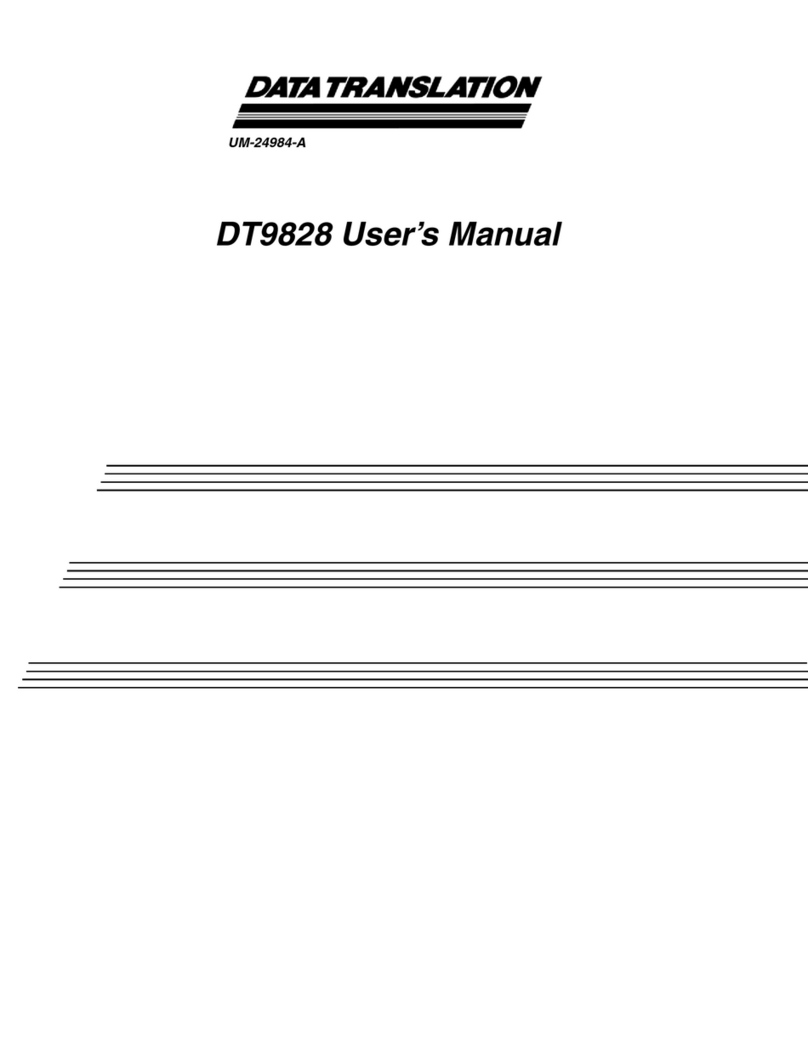
Data Translation
Data Translation DT9828 User manual
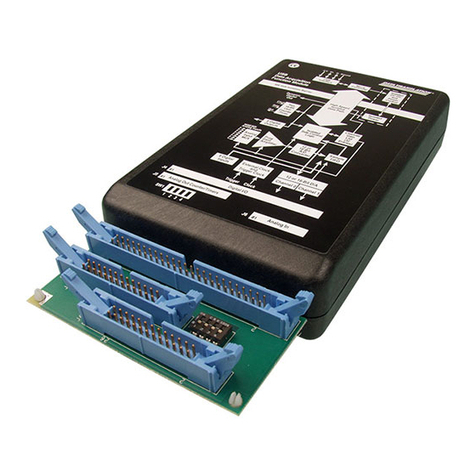
Data Translation
Data Translation DT9800 Series User manual
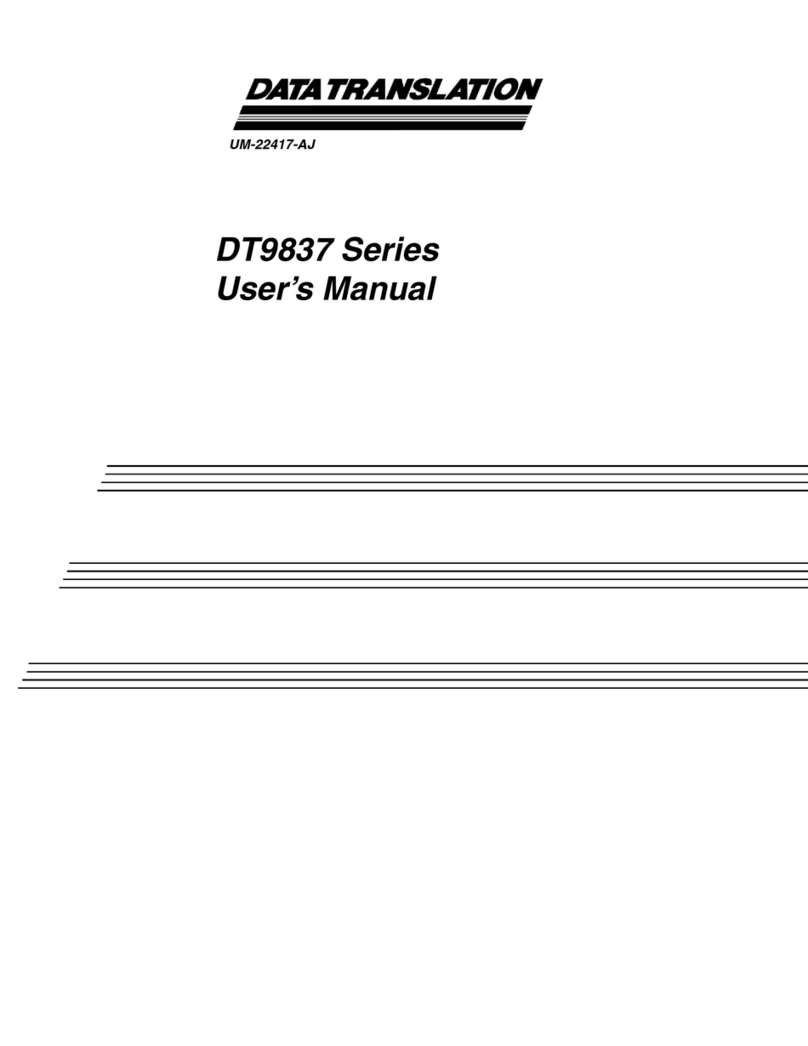
Data Translation
Data Translation DT9837A User manual
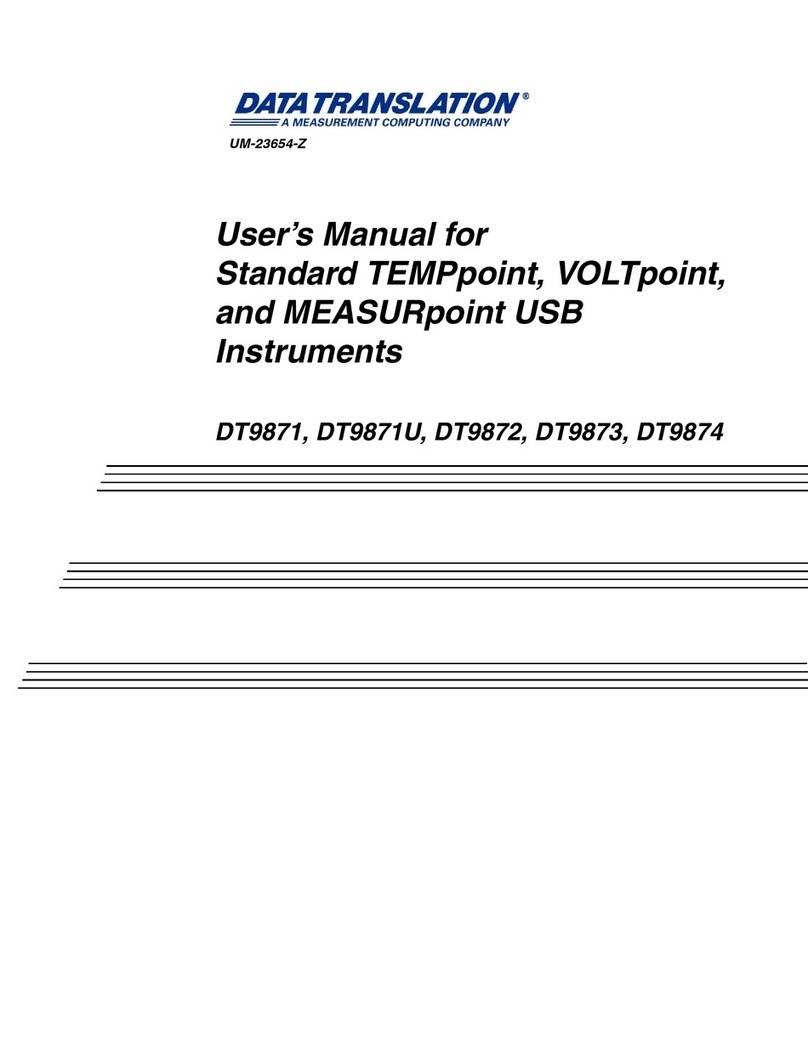
Data Translation
Data Translation DT9871 User manual
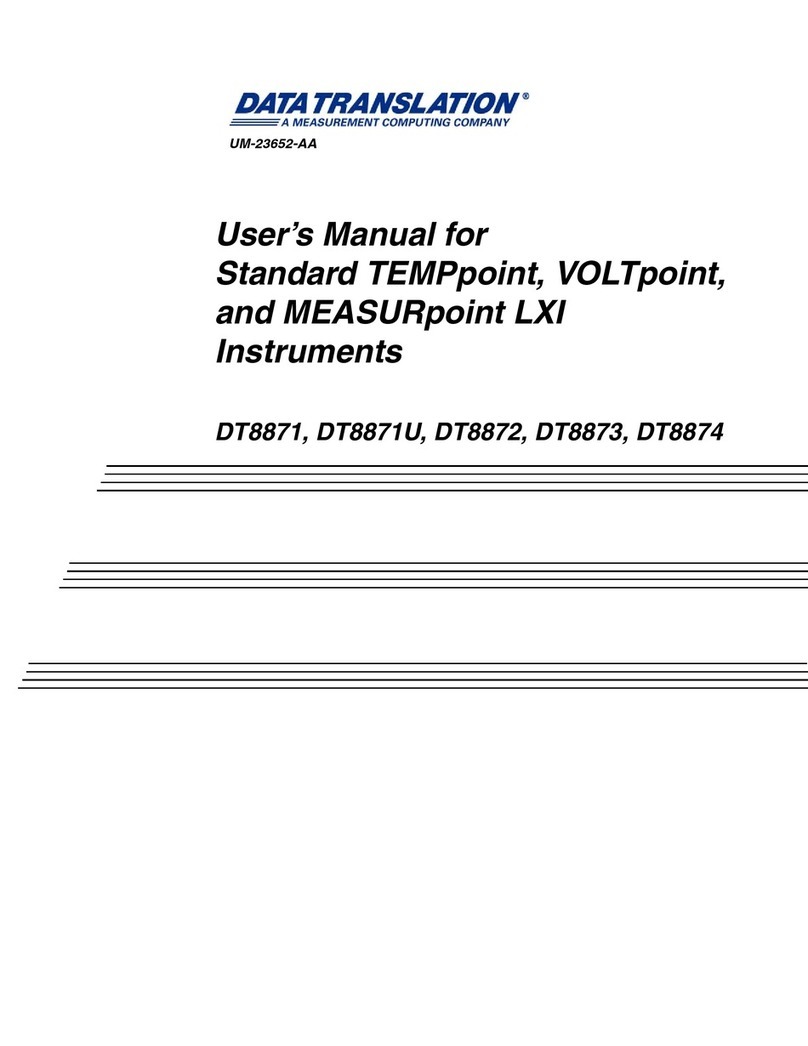
Data Translation
Data Translation DT8871 User manual
